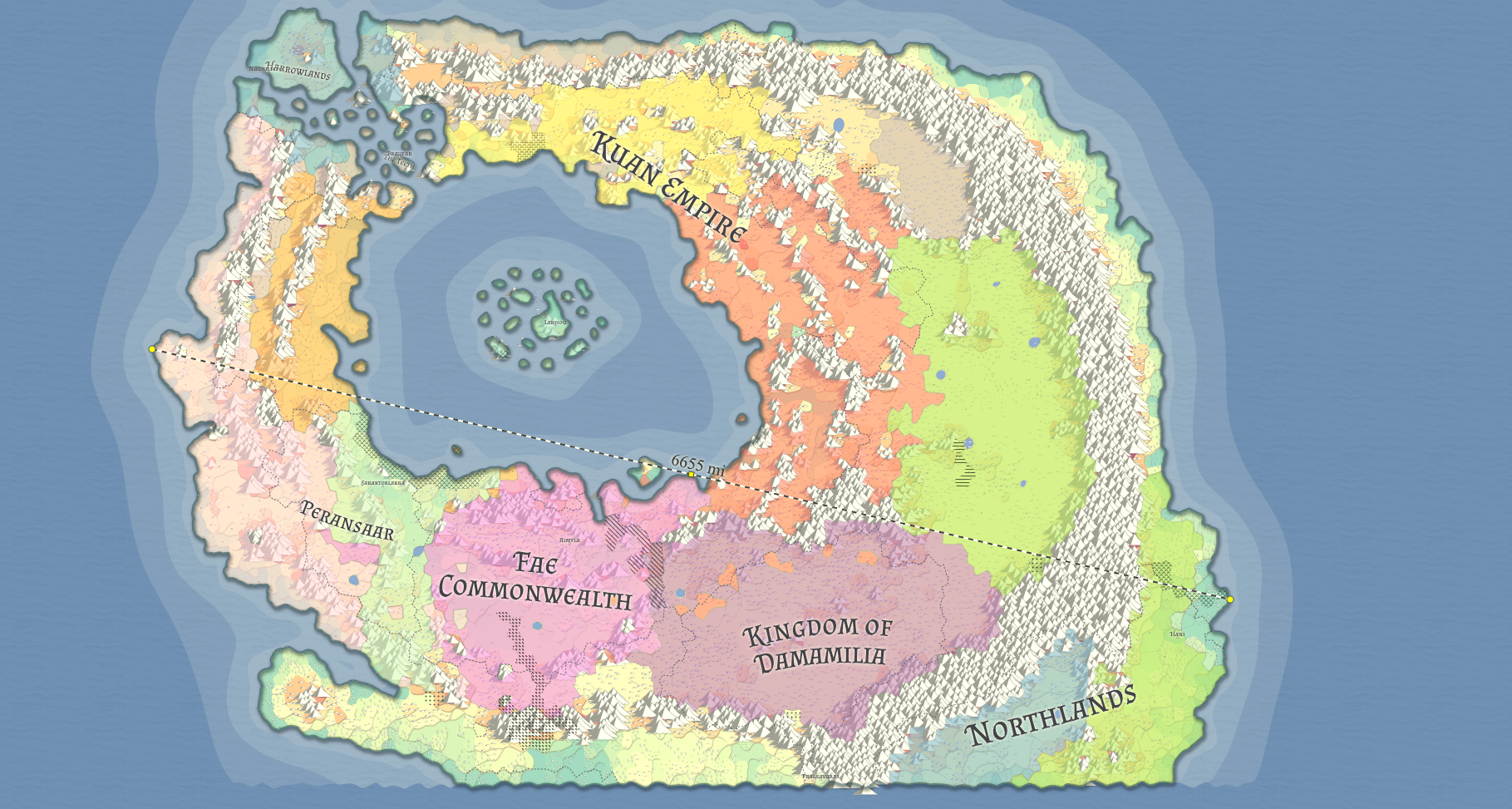Ghostdeer
This is our tradition and history. The Ghostdeer are our food, our fiber, our wealth and the root of our ways.The northern Olien peoples have herded and migrated with the Ghostdeer for thousands of years. They move from summer grazing to sheltered winter range or barns and pastures in more settled areas.
Basic Information
Anatomy
The Ghostdeer, also called Alopmyrx by sages and scholars, is a ungulant ruminant with paired wide hoofed toes, hoizontal pupils, and a characteristic set of lateral reaching brow horns and crown. Between the crown horns is a pale blue flickering "flame". The flame is present in any living Ghostdeer but vanishes on death. The flame produces only limited illumination. The neck and shoulders are covered in a heavy shaggy coat. The wide lipped muzzle has a central prehensile "finger" used to aid grazing and to grip and strip branches. The coat is light tan to grey with a white underside. The tail is a short upraised triangle. Adults stand approximately 1.3 m at the shoulder. The horns have a rough ring structure with typical colors of dark brown or black and rarely ivory white.
Genetics and Reproduction
The fawns are born in later winter or early spring and will have typically grown to 1 m at the shoulder by the late autumn. The horns and "crown" will have not fully emerged, typically only a boney plate on the forehead in the yearlings. Sexual maturity occurs at age 2 with full development of the crown and horns. These occur in both sexes.
Additional Information
Domestication
Traditional myths say that thousands of years ago the Olian ancestors made a pact of protection and married the Ghostdeer spirits. In exchange for human aid against a Devil beast enemy the Ghostdeer pledged service as mounts, food and material for clothes and tools. Modern herds are maintained in winter and summer migration and grazing. They are trained to pull sledges, and as mounts. Ghostdeer are too flighty to use for fighting mounts, typically ghosting if threatened.
Uses, Products & Exploitation
The coats and brushed and shaved for fiber that is spin unto a wooly cloth. The milk is collected for cheese, drink or in cooking. The old and injured provide meat, bone, horn and leather.
Geographic Origin and Distribution
The Ghostdeer are found across the northern taiga and ice forests from the foot of the Whitefall mountains to the frozen wastes of the west that oversee the northern Harrowland.
Perception and Sensory Capabilities
The Ghostdeer is immune to the effects of cold and ice. They will bed down in blizzards or ice storms to weather the worst and then arise shaking off the ice and snow. The coat is thick and warm in winter and dense enough to resist most insect pests in summer. Ghostdeer are named from the ability of "ghosting" where the flame on the head appears to consume them and they pass into a pocket realm and emerge a few tens of meters away. This ability is manifested in yearlings and fawns (or passengers) in close proximity ( less than 1/2 meter) may pass with the ghosting individual.



Comments